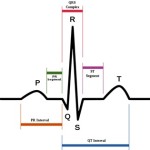Streptococcus is a Gram- positive bacterium. The streptococcus bacteria belong in a genius of coccus bacteria, it is a chained bacteria and it is in the lactic acid bacteria (LAB) group. The individual streptococcus cells are round or ovoid and all lack the enzyme catylase because the cells are dividing along a single plane. Streptococci can occur in pairs or in chains. Streptococcus bacteria like many other types of bacteria in the firmicute phylum, stains dark blue or violet when subject to Gram staining due to the composition of its cell wall.
This procedure is everything that is meant by saying that streptococcus is a Gram-positive bacterium. A streptococcus bacterium is resistant to acidic conditions and thrives on no oxygen or levels of oxygen below the concentration of oxygen in air. This is due to the streptococcus membership of the lactic bacteria group. That is why it has the benefit of the strong resistance to the acidic conditions.
The streptococcus bacteria have eighteen alphabet groups, called Lancefield groups. The name comes from the American bacteriologist Rebecca Craighill Lancefield. She developed this method of classifying streptococci in 1933 based on the antigens, or antibody producing substances, found in the cell wall of the streptococcus bacteria under examination. Not all types of streptococcus react to Lancefield grouping; they must be classified using hemolysis. This helps to monitor how completely the bacterium breaks down in a blood solution.
Viridans Streptococcus symptoms
The group viridans streptococcus can be non-hemolytic or it can break down partially, causing the green stain responsible for the name “viridans”. The group viridans streptococcus does not have a reliable taxonomy classification and nomenclature. Most of the streptococcus types can cause disease or infection in humans, but there are many other types of streptococcus that are harmless. Viridans streptococcus, Group A streptococcus, Group B streptococcus and streptococcus Pneumoniae are the types that can cause disease or infections in humans and they are most commonly of medical concern.
Group A streptococcus (GAS), or S pyogenes
This is one of the most common pathogens in humans. Streptococcus group A infection can affect several locations of the body, as well this infection can be frequently categorized by its location. The strep throat is one of the most well-known infections. The strep throat can affect the pharynx and cause several symptoms which can lead to severe sore throat, swollen tonsils, nausea, headaches and yellow and white patches in the throat.
GAS can be very dangerous; it can cause puerperal fever or sepsis in women after childbirth. We have to be very careful. Sepsis is when a microbe enters the bloodstream, possibly causing a serious systemic reaction. It is also responsible for the attacks of scarlet fever which, like puerperal fever. This is all forgotten because of the high control of the hygiene and proper therapy. In the skin, GAS can cause impetigo, cellulitis and erysipelas. The GAS infections are also causing pneumonia, meningitis, tonsillitis, septic arthritis and toxic shock syndrome. This is a small list among the other diseases.
Group B streptococcus, or S agalactiae
This is frequently found in the urogenital tracts and rectums of women of child-bearing age. These complications may arise in women with compromised immune systems, but it is more commonly significant when transmitted to babies during childbirth. If the newborn is diagnosed with GBS infection, than this infection can cause meningitis or sepsis, which at this point it can lead death or long term hearing loss. The neonatal meningitis often goes undiagnosed and can be fatal. The symptoms of neonatal meningitis are vomiting and fever and it gives entirely different presentation from the adult meningitis.
Streptococcus viridans is responsible for the dental infections and the formation of plaque. Together with the Group C, F, G and particularly D, can cause endocarditis. Endocarditis is the inflammation of the inner layer of the heart, known as the endocardium.
Streptococcus pneumoniae, or pneumococcus, is the most common cause of invasive bacterial infection of children and the elderly. Pneumonia, sinusitis and meningitis are just few amongst other diseases that streptococcus pneumoniae can cause. Streptococcus pneumonia may cause either lobar pneumonia, which affects an entire lung lobe, usually adults, or bronchial pneumonia, which affects the alveoli, tending towards older adults or children.























